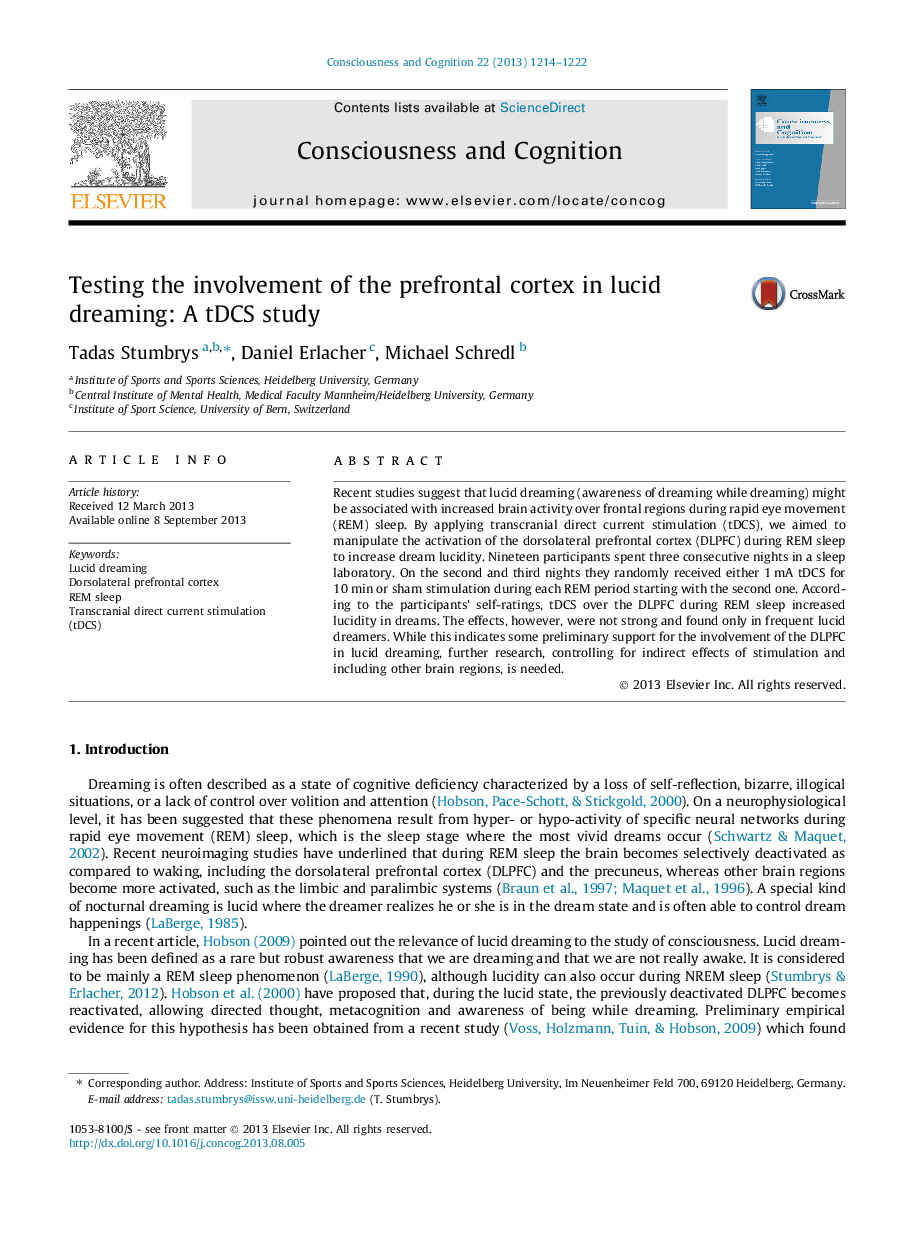| Article ID | Journal | Published Year | Pages | File Type |
|---|---|---|---|---|
| 10458505 | Consciousness and Cognition | 2013 | 9 Pages |
Abstract
Recent studies suggest that lucid dreaming (awareness of dreaming while dreaming) might be associated with increased brain activity over frontal regions during rapid eye movement (REM) sleep. By applying transcranial direct current stimulation (tDCS), we aimed to manipulate the activation of the dorsolateral prefrontal cortex (DLPFC) during REM sleep to increase dream lucidity. Nineteen participants spent three consecutive nights in a sleep laboratory. On the second and third nights they randomly received either 1Â mA tDCS for 10Â min or sham stimulation during each REM period starting with the second one. According to the participants' self-ratings, tDCS over the DLPFC during REM sleep increased lucidity in dreams. The effects, however, were not strong and found only in frequent lucid dreamers. While this indicates some preliminary support for the involvement of the DLPFC in lucid dreaming, further research, controlling for indirect effects of stimulation and including other brain regions, is needed.
Keywords
Related Topics
Life Sciences
Neuroscience
Cognitive Neuroscience
Authors
Tadas Stumbrys, Daniel Erlacher, Michael Schredl,
